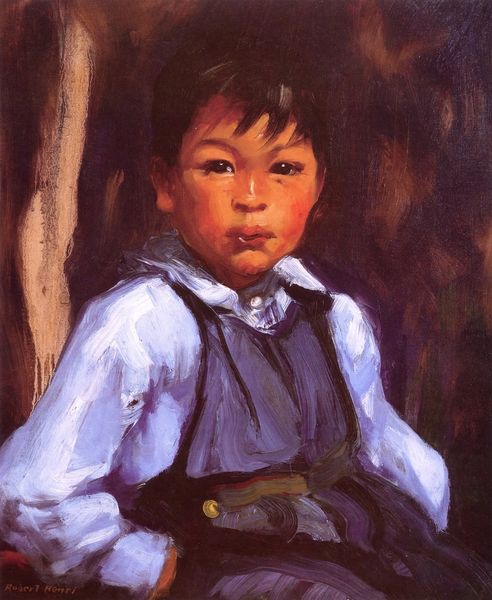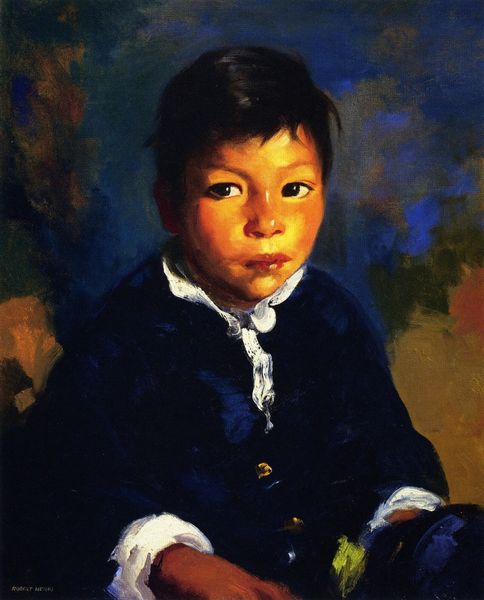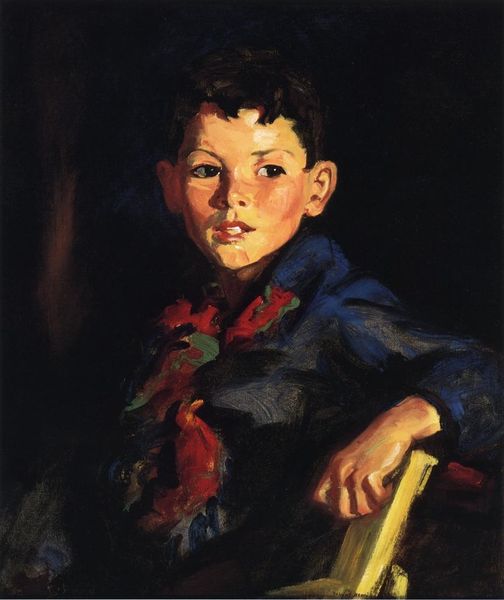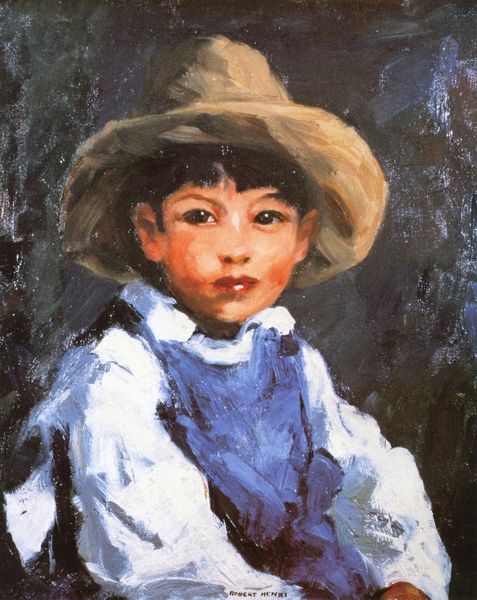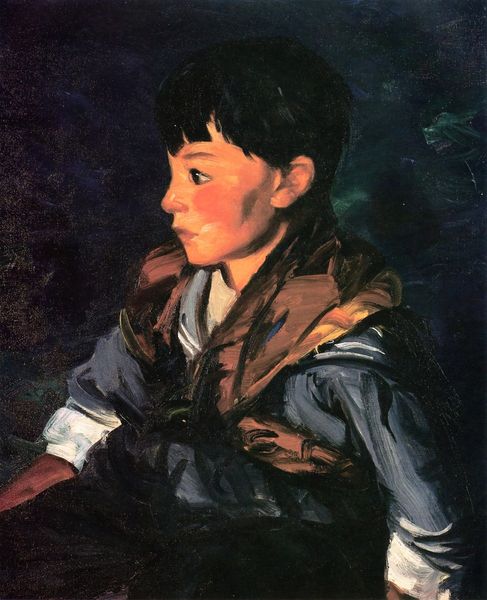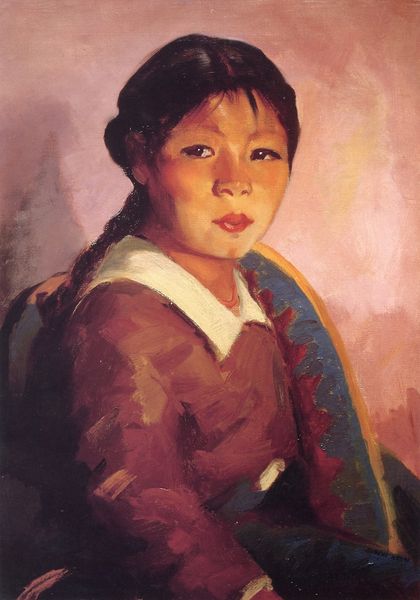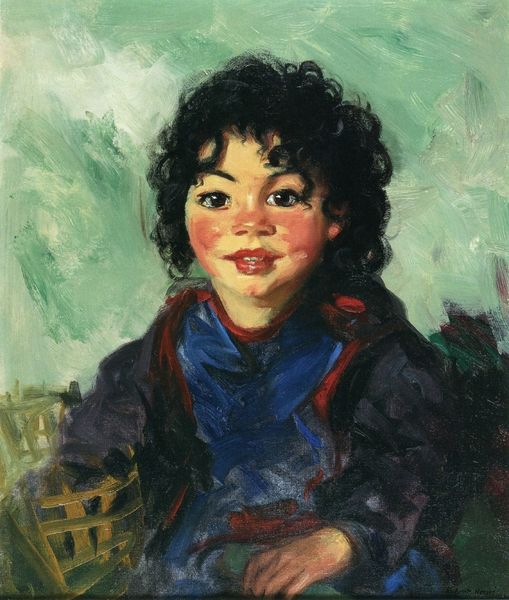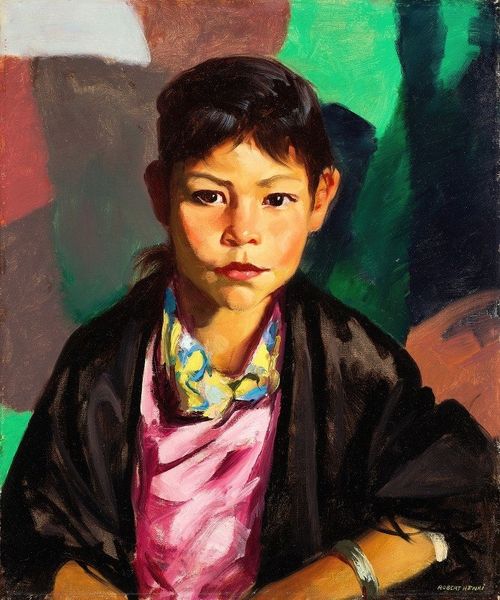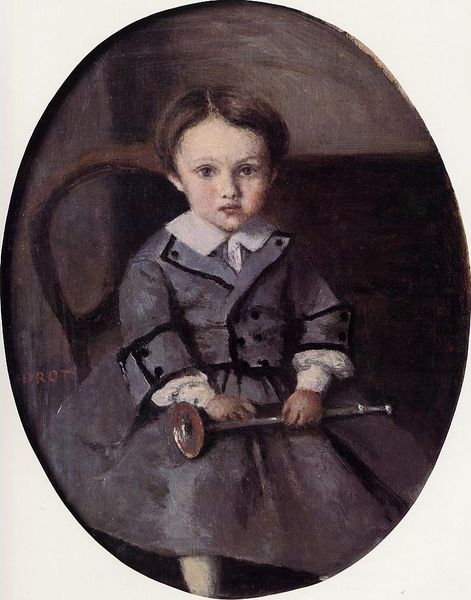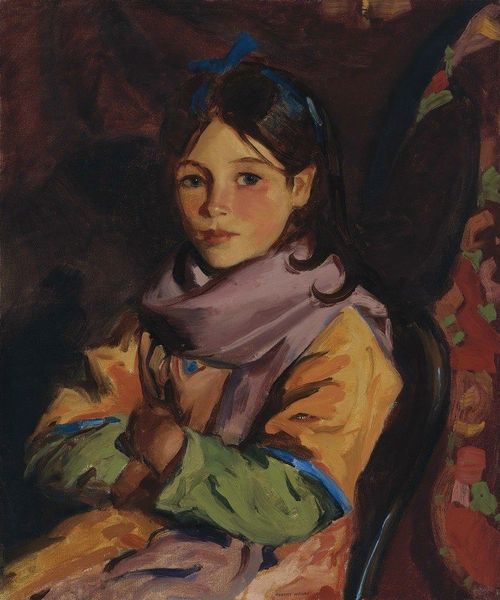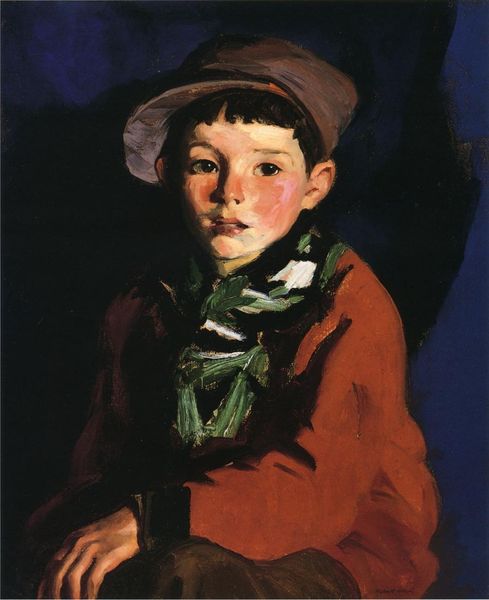
oil-paint
#
portrait
#
oil-paint
#
oil painting
#
portrait reference
#
ashcan-school
#
portrait drawing
#
portrait art
#
realism
Copyright: Public domain
Curator: This is "Francisco," an oil on canvas completed in 1922 by Robert Henri. Henri was a leading figure of the Ashcan School, a movement dedicated to portraying everyday life in New York City. Editor: He’s got such an arresting gaze. It's kind of melancholy, almost challenging you. He feels like he has stories, even if he's only painted, frozen in time. Curator: Indeed. Henri consciously aimed to capture the vitality of his subjects. The Ashcan artists rebelled against the formal academic styles, focusing instead on the raw and unvarnished realities of urban existence. Editor: It’s in the brushstrokes too. The jacket and the background have this hurried, unfinished quality, a whirlwind of reds and purples. It pushes your focus right back to his face, doesn't it? I bet that was very deliberate. Curator: It was a common feature of the Ashcan style. Henri prioritized capturing an authentic likeness, aiming to reflect not just physical appearance, but the subject's character and social environment, often bypassing any desire to glamourize them. Editor: Funny thing is, this almost makes him iconic, you know? I look at his eyes, his clothes, that cane he's gripping... It's almost a character, an attitude, rather than just a boy in a painting. I could imagine writing a novel about this kid! Curator: The power of the Ashcan school comes, in my view, from this kind of direct engagement, by compelling viewers to connect with representations of ordinary lives in the rapidly modernizing early 20th Century urban setting. It's also important to note the complex politics of imagery at the time and which voices, and indeed faces, got represented and circulated within art. Editor: Art and revolution, eh? And to think, all that just starts with one kid and his painted stare! Well, Robert Henri certainly succeeded in capturing something, or perhaps he let young Francisco capture us. Curator: Yes, I believe it's that invitation for sustained, meaningful social inquiry that secures this portrait’s lasting significance.
Comments
No comments
Be the first to comment and join the conversation on the ultimate creative platform.
